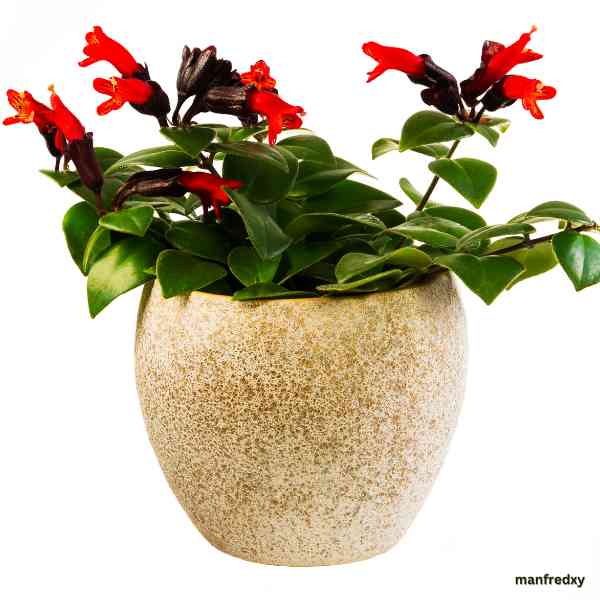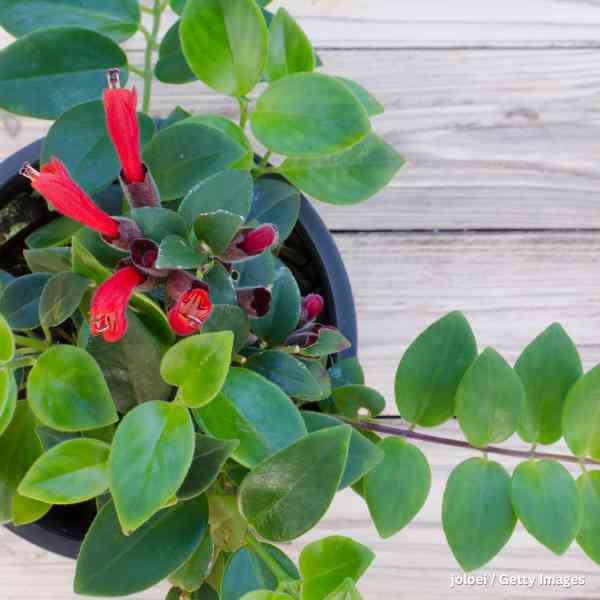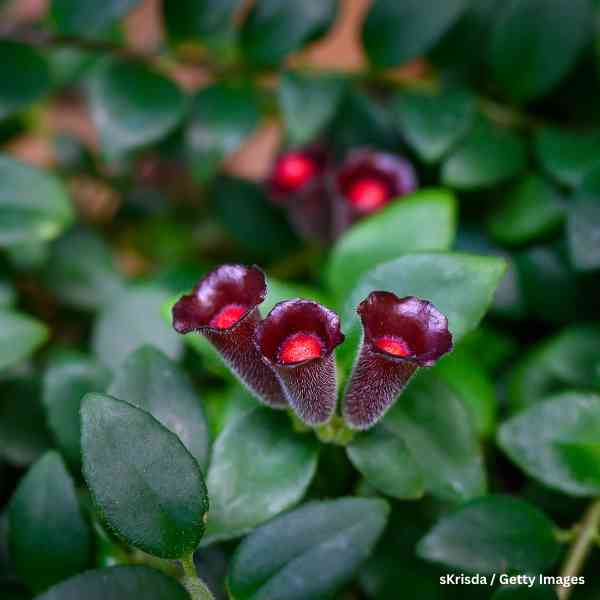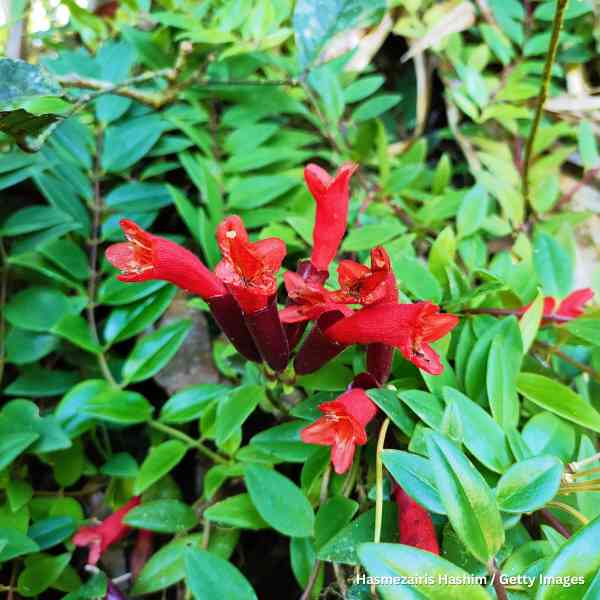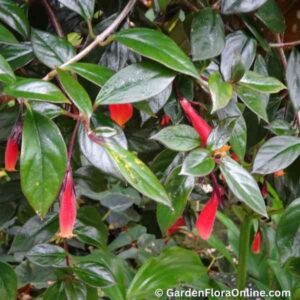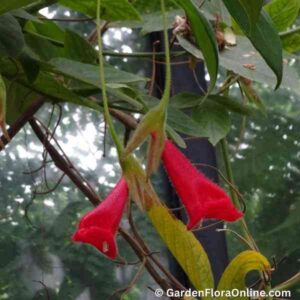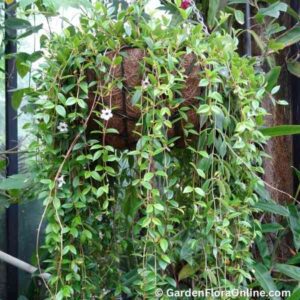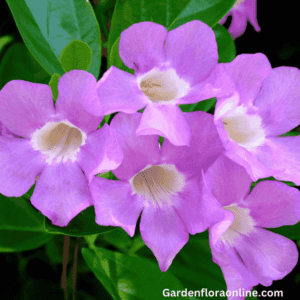Aeschynanthus radicans (Lipstick Plant)
This epiphytic evergreen vine, native to Malaysia, grows with slender, trailing, and arching stems that originate from tree branches. It produces dense terminal clusters of vibrant red, tubular flowers that add striking color to its form. The leaves are dark green, elliptical in shape, fleshy, and have smooth margins, contributing to its lush appearance. The fruit is cylindrical and can reach up to approximately 4 centimeters in length. This vine is particularly well-suited for cultivation in hanging containers, where its graceful growth habit and abundant blooms make it a visually appealing ornamental plant.
Cultivation: This plant thrives in partial shade and benefits from a warm, humid environment with consistent moisture, but the soil should never become waterlogged. A mix containing sphagnum or African violet potting mix with added crushed charcoal works well. Regular watering is essential, particularly for plants in hanging baskets, while cooler and slightly drier conditions in winter can encourage bud formation. Maintain temperatures between 18°C and 21°C for optimal growth. Prune stems after flowering to promote fresh growth, trimming back excessively long or straggly stems if needed. Avoid drafts and improper watering, which can lead to leaf drop. A detailed information on cultivation and care can be found here.
Etymology: The genus name Aeschynanthus is derived from the Greek words aeschyne, meaning shame or blush, and anthos, meaning flower, referring to the red or blushing color of the flowers. The specific epithet radicans comes from the Latin word radicans, meaning rooting, referring to the plants habit of producing roots at its nodes.

